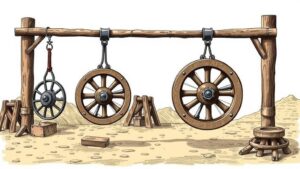The Role of Structural Mapping in Identifying High-Grade Gold Zones
The Role of Structural Mapping in Identifying High-Grade Gold Zones
Structural mapping plays a crucial role in the exploration and identification of high-grade gold zones. Understanding the geological structures of an area is fundamental for geologists and mining companies aiming to locate economically viable gold deposits. This article explores the significance of structural mapping, its methodologies, and its application in the mining industry.
Understanding Structural Mapping
Structural mapping involves analyzing rock formations and their configurations to determine the geological history of an area. This technique allows geologists to identify various structures such as faults, folds, and shear zones, which can significantly influence mineralization processes. By directly correlating structural features with gold trends, explorers can enhance their ability to locate high-grade zones.
- Faults: Fractures in the earth where movement has occurred, which can create pathways for gold-bearing fluids.
- Folds: Bends in rock strata that can trap minerals in their crests.
- Shear Zones: Areas of concentrated deformation that often host significant gold mineralization.
Methodologies in Structural Mapping
There are several methodologies employed in structural mapping, including field mapping, remote sensing, and geophysical surveys. Each method contributes uniquely to building a comprehensive understanding of geological structures.
- Field Mapping: Involves geologists manually surveying an area to document rock types, structures, and spatial relationships.
- Remote Sensing: Uses satellite images and aerial photography to assess large areas of land quickly.
- Geophysical Surveys: Actively gathers data regarding the physical properties of underground formations, enhancing structural maps.
For example, in the Lihir Gold Mine in Papua New Guinea, the integration of geophysical data with detailed structural mapping has significantly improved resource estimation and mine planning processes, resulting in enhanced gold recovery rates.
Applications in Identifying High-Grade Gold Zones
The integration of structural mapping into exploration campaigns can directly lead to the identification of high-grade gold zones. By understanding the spatial distribution of geological structures, targeted drilling and extraction efforts can be optimized, thereby increasing the likelihood of discovering economically viable deposits.
In Canada, the Hemlo Gold Mine serves as an exemplary case. Structural mapping revealed intricate fault systems that guided drill programs and resulted in high-grade gold discoveries at various depths. The identification of these structural controls enabled the mine to extract over 21 million ounces of gold since its inception.
Challenges in Structural Mapping
While structural mapping is a powerful tool, it is not without its challenges. Geologic complexity, inadequate data, and the scale of operations can inhibit the effectiveness of mapping efforts. Also, reliance on outdated or imprecise data can lead to misinterpretations, ultimately affecting exploration results.
- Geologic Complexity: The presence of overlapping structures can complicate the mapping process.
- Data Quality: Incomplete or inaccurate historical data can lead to flawed analyses.
- Scalability Issues: Larger exploration areas may result in gaps in detailed mapping.
Future Trends in Structural Mapping
The advent of advanced technologies like 3D modeling and artificial intelligence (AI) in structural mapping is revolutionizing the field. These technologies allow geologists to visualize complex geological scenarios and analyze vast amounts of data for improved accuracy in locating gold zones.
For example, AI algorithms can process geological and geochemical data faster than traditional methods, leading to the swift identification of high-potential targets in exploration programs. Such innovations promise to optimize resource extraction while minimizing environmental impacts.
Conclusion
Structural mapping is an indispensable component of modern gold exploration. By determining and understanding geological structures, mining companies can significantly improve their chances of locating high-grade gold deposits. Despite challenges such as geological complexity and data reliability, continuous advancements in technology promise to enhance the effectiveness of structural mapping in the future. For professionals in the field, focusing on integrating innovative mapping techniques will be key to unlocking new opportunities in gold mining.
Actionable Takeaways
- Invest in advanced training for geologists on the latest structural mapping technologies.
- Use a combination of methodologies to enhance data accuracy and reliability.
- Keep abreast of technological advancements in AI and 3D modeling to remain competitive in exploration efforts.


